Drone, Robot Deliveries Approach Mainstream U.S. Adoption
Contrary to the flying car predictions of the 1980s, autonomous deliveries with drones and robots are finally coming into focus—and restaurants need to jump on board.
Autonomous meal deliveries via drones and robots have been on the horizon for years, but contrary to the flying car predictions of the 1980s, this delayed revolution promising faster, cleaner, cheaper deliveries is finally coming into focus—and it’s time for restaurant operators to jump on board.
Like the jarring rise of third-party delivery and curbside pickup in the pandemic’s early days, fortune will favor early adopting restaurants that prioritize giving off-premises customers a better experience than any meal delivered by a car or bicycle.
I know it’s easy for operators to shrug off autonomous delivery as a future concern. Point taken for this enthusiastic reporter, but inflation and driver wage increases have flown our industry toward yet another tipping point that will drive rapid, mass adoption. And this time, you won’t be able to miss it cruising above you in the skies or rolling past you on the sidewalk.
For a comprehensive look at the current and future state of autonomous deliveries in the U.S., I spoke with founders and executives at the leading global drone and robot delivery providers including Flytrex, Starship, and Zipline International, dug into the latest moves from Alphabet’s Wing, DoorDash, and Amazon Prime Air—and interviewed restaurant operators already delivering meals with driverless vehicles.
Latest autonomous milestones
First, some notable recent milestones in aerial and robotic delivery for those who aren’t closely following the category.
Zipline received approval from the Federal Aviation Administration (FAA) in September 2023 to operate drones without a human set of eyes supervising each flight. This beyond the visual line of sight (BVLOS) clearance is the most significant milestone crossed for mainstream drone adoption in the United States. Zipline began its first BVLOS deliveries two months later, in November 2023. The San Francisco-based drone provider recently celebrated its one-millionth commercial drone delivery.
That same month, Flytrex received its BVLOS clearance in the United States, which Flytrex co-founder Yariv Bash says is “far ahead” of any other country in terms of regulatory approval.
In March, DoorDash and Wing announced a partnership giving U.S. delivery customers in Virginia the option to order eligible items from Wendy’s via drone. This follows previous DoorDash/Wing testing in Australia, which has expanded to three locations in Queensland with more than 60 participating merchants.
Four months later, the FAA extended that approval to Wing Aviation—owned by Alphabet/Google. The FAA’s actions specifically cleared the way for unmanned drone deliveries in the Dallas-Fort Worth metro, which is the epicenter of U.S. drone testing.
Harrison Shih, senior director of DoorDash Labs, said expanding into the U.S. is a significant milestone in sustainability and efficiency, adding that, “we are committed to advancing last-mile logistics by building a multi-modal delivery platform that serves all sides of our marketplace.”
Wing’s head of partnerships, Cosimo Leipold, said in a press release that expanding its DoorDash partnership and launching in the U.S. is a “direct result of the success we’ve seen from our initial collaboration in Australia, where Wing has served tens of thousands of customers via the DoorDash app for over a year now.”
Starship, a leader in robotic sidewalk delivery that just celebrated its tenth anniversary, continues its nationwide expansion of autonomous deliveries on U.S. college campuses. The Estonia-based provider raised $90 million in February as it works to expand to campus-adjacent neighborhoods across the country.
The FAA told Bloomberg that it expects the number of registered drones will reach 3 million by 2028, up from 782,000 currently in use in the United States. A new study from MarketsandMarkets Research predicts robot delivery in the U.S. will grow from $400 million in 2023 to $1.8 billion by 2028.
If realized, this exponential growth would mark a sea change for restaurant delivery, and many other verticals of the economy.
Restaurant operations cleared for takeoff
From a six-pack of socks to prescription drugs, drone delivery is set to further revolutionize the direct-to-consumer movement across the globe from city centers and suburbs to the most remote locations on the planet.
Retail giants Amazon and Walmart loom large. Amazon previously announced plans to reach 500 million annual deliveries by the end of the decade. Amazon Prime Air received its FAA BVLOS certification in May.
In concert with Wing, Walgreens began drone testing in Dallas in 2022. This summer, Walmart joined the fray with plans to deliver within a six-mile radius of a Fort Worth location for packages weighing less than 2.6 pounds.
In foodservice, many of the largest and most innovative restaurant groups have also begun drone operations in the U.S. To name a few, Panera, Chick-fil-A, Domino’s, Wow Bao, Brinker, El Pollo Loco, Jersey Mike’s, and Flynn Group—the largest U.S.-based franchisee group with more than $4.6 billion in annual sales—have all announced or started drone delivery operations.
This August, Shake Shack and Serve Robotics announced a robotic delivery partnership with Uber Eats to allow select customers in Los Angeles to receive their next orders via a Serve robot.
The largest drone delivery providers say these tests are approaching the point where the restaurant operations, technology integration, and consumer experience sides of the channel are fully built out. Crashes and other negative incidents have become vanishingly rare. From this point forward, autonomous deliveries have nowhere to go but up, with no notable barriers remaining.
Flytrex competes with delivery drivers
"We're very much nearing the pivotal point,” said Flytrex CEO and co-founder Yariv Bash. “The way I like to look at it is that we're getting to a point where building an MVP, a minimum viable product, is becoming easier with regulations—and it's just really the final approvals from the FAA are being given.”
Flytrex was founded in Israel in 2013 by Bash and Amit Regev, previously the CEO of SafeWallet. Its primary U.S. markets include Granbury and Little Elm, Texas, and Holly Springs and Raeford, North Carolina.
Bash said his drones are not competing with other autonomous delivery solutions, but rather that they are competing with DoorDash drivers. While “maybe 20 percent” of what the company is currently focused on relates to the drone vehicles themselves, the remaining work centers on the digital integrations and reconfiguring the existing U.S. delivery market that’s entirely based on cars and bikes.
“You can build the BMW or Rolls-Royce of the drone world,” Bash said, “but that’s not going to be any help in delivering a burrito.”
While the environmental consequences of delivering one or two meals by car are well documented, the financial implications for restaurants and diners are equally consequential to the scale-up of autonomous deliveries.
Flytrex is prioritizing suburban neighborhoods, rather than dense urban areas where the bulk of residents live in high-rise apartments and condo towers. As Bash explained, sending customers up to their rooftop to receive a delivery is inconvenient.
“Every C-level executive that I spoke with…they're all very much frustrated with the current situation,” Bash said. “They're paying a lot. Customers' experience isn't that good. You know the statistics…if I can deliver the food faster and hotter and for a lower rate, that's a win both for the customer and for the restaurant.”
Zipline entering U.S. markets
Based in San Francisco, but previously focused outside of North America, Zipline says it is the world’s largest drone delivery brand with orders going out every 65 seconds and a total of more than 1.1 million commercial deliveries to date.
Zipline began operations a decade ago with a “narrow focus” on medical deliveries in Rwanda. Its mission is now expanding to food delivery in the U.S. with restaurants including Sweetgreen, Mendocino Farms, Jet’s Pizza, and the Flynn Group.
Its Platform 1 vehicles will remain in service, but are optimized for longer-range deliveries. Its latest drones use on-board “acoustic perception” systems for detecting and avoiding other aircraft, which allows the company to scale to new locations quicker than those using ground-based systems to operate in a variety of airspaces.
Chris Kenney, Zipline’s head of restaurants, said the brand is launching its new vehicles, dubbed Platform 2, that switch from airplane-like drones to more traditional multi-prop drones that can drop packages with a tether, rather than calculating a drop point from a fast-moving vehicle.
Platform 2, he said, will “enable drone delivery to massively scale within the U.S.” starting in Dallas-Fort Worth, with plans to enter Seattle and Detroit in the near future.
“We don’t sell our drones, instead we sell capacity on our delivery network, which means we can serve multiple restaurants with the same drones,” Kenney added. “A Zip may start its day delivering donuts, then deliver salads at lunch, and groceries at dinner time. As far as restaurants are concerned, when they need to make a delivery an order is prepared just like normal, but instead of putting it on a pickup shelf or handing it off to a driver, it’s placed in our droid, and we automatically handle the rest. We even have what we call ‘loading portals,’ which let people load orders from inside the store.”
The company stressed that drones aren’t burdened by heavy car traffic, where long deliveries result in soggy food and “an underwhelmed customer.”
As Zipline scales up with restaurants, it’s also working with Walmart and more than a dozen health systems including Cleveland Clinic, Houston’s Memorial Hermann, and Intermountain Healthcare in Utah.
“One thing we’ve learned is that instant delivery changes behavior patterns in really unexpected ways,” Kenney said. “We won’t be surprised if a new or surprising use case becomes a large portion of our business. For example, we never thought about animal health when we launched in Rwanda, but that has become a huge success.”
Alphabet’s Wing diversifies
Founded by Google’s parent company, Alphabet, Wing is already delivering groceries in as little as 30 minutes with Walmart in Dallas-Fort Worth. It promises lower cost deliveries for retail, logistics, and healthcare organizations, as well as easy integrations with delivery apps, ecommerce platforms, and parcel carrier services.
Its fleet of lightweight drones have completed more than 350,000 commercial deliveries across three continents. Its latest aircraft that’s designed for heavier packages looks like a cross between an airplane and a traditional drone with sky-facing propellers and four wing-mounted, forward-facing props.
The new craft can travel 12 miles round trip, cruise at approximately 65 miles per hour, and carry a payload up to five pounds.
In a blog post, Wing said “order trends tell us that 70 percent of all U.S. orders are delivered by one Wing aircraft, while 30 percent are delivered by two.” To better serve that 30 percent, Wing says it will introduce additional vehicles to complement its existing fleet.
“It’s always been our vision to implement a multimodal drone delivery model, in the same way that ground delivery uses different vehicle sizes for different orders,” the company said. “We’re committed to making that vision a reality so more shoppers can experience the convenience of drone delivery. With the new aircraft carrying more food, medicine, and household essentials, customers in urban and suburban areas will be able to bundle their orders better—and receive them in one quick trip.”
Starship’s campus cruisers
Currently cruising around more than 100 locations in six countries, including the U.S., U.K., Estonia, Germany, Denmark, and Finland, San Francisco-based Starship has a global fleet of more than 2,000 delivery robots. In total, they have completed nearly 7 million autonomous deliveries and can travel up to 18 hours on a single charge.
Chris Neider, vice president of business development at Starship, said its recent investment allows the company to scale up in North America and Europe.
“We’re still in the very early days of scratching the surface of what is possible here,” he added. “When you think about hardware and robots and physical things out in the world, it’s a very hard space.”
Even with the challenges of sharing space with pedestrians, cars, emergency vehicles, and inclement weather, Starship has near-term plans to venture beyond the comparatively safe spaces of campus environments into adjacent neighborhoods that are often packed with restaurants.
“The university has been this incredible space with the right demographic that gets robot technology to help us prove and make this thing the world leader that it is today,” Neider said. “We’re at over 50 campuses now, but how do we bring that ecosystem to play in not just the university space, but…right off campus.”
Starship robots now reach 1.5 million students delivering from 900 merchants on U.S. college and university campuses.
Neider expects partnerships with third-party delivery providers as the way forward, allowing autonomous delivery providers to focus on what they do best, while meal delivery providers like DoorDash can also stay in their lane—focused on better, more efficient delivery infrastructure.
Migrating beyond campus environments means finding urban, walkable neighborhoods that are a better fit than 2,000-pound automobiles delivering one or two individual meals.
“We want to own that sub-two-mile [radius] and do that better and more efficiently and cooler than anybody else in the world,” he said. “I believe in the value it's going to create, the good it's going to do for the world. When you think about greenhouse emissions and all the vehicles that are traveling around with one person in it or one burrito, I want to unlock that and help bring that change to the world."
Strip mall neighbors
Rodger Blake-Ward is a Jersey Mike’s franchisee in North Carolina with 79 locations and active drone deliveries at its Holly Springs store outside of Raleigh. Located in the same strip mall as a Flytrex Drone Delivery Point, his Jersey Mike's store has been delivering with Flytrex since early 2022. At present, drone deliveries are 10 percent of all orders.
“We do really well with Flytrex,” Blake-Ward said, adding that technology integration has improved over time. All orders are tracked through a Flytrex-provided tablet that harkens back to the early days of third-party delivery. “On a Saturday, we’ll do [approximately] 35 Flytrex orders.”
Flytrex declined to outline the specific costs of drone delivery, but said it’s already cheaper for both restaurants and customers given the number of deliveries a single drone can make compared to a car-based courier.
Blake-Ward sometimes goes down to a nearby field where he watches Flytrex drones taking fresh sandwiches into the sky. Between flights, new batteries are often swapped in, and there are typically four Flytrex operators supervising deliveries.
“I don’t know if I’d use the word revolutionary, but [drone delivery] is as big as DoorDash and Uber Eats,” he said. “We would do this in any market that it becomes available, because it definitely has helped us get more customers” partially due to the “cool factor” of drone delivery.
Asked what aspects of drone delivery need further refinement, Blake-Ward said there’s nothing left to fix, as his location typically has 15 minutes to cook and package an order before delivery, and that his employees have built a good rapport with the Flytrex team, which he contrasted against car-based delivery providers with a rotating roster of drivers.
“From a technology standpoint, I would love for [Flytrex] to have a printer to print off their tablet for the kitchen,” but that’s probably one of the only big things I would like to see,” he added.
Flytrex’s Bash said his company has “taken care of everything” related to point-of-sale integrations, including developing its own merchant app so operators can track and approve drone-based orders. Thinking back to the early days of third-party delivery where each provider required its own in-store tablet, it’s reasonable to expect tablet-free integrations from autonomous delivery providers in the near future.
The Holly Springs Jersey Mike’s receives Flytrex payments every month reimbursing orders that come in through Flytrex’s customer-facing marketplace.
Bao on a wire
Wow Bao, a Chicago-based restaurant and virtual brand pioneer, began its drone delivery pilot with DoorDash and Wing Aviation in Plano, Texas, this summer. Operating out of a ghost kitchen in the Dallas-Fort Worth metro, President and CEO Geoff Alexander said the drones can reach 70 mph while delivering meals, which typically arrive in less than 30 minutes of placement.
“We want to be part of that stuff,” Alexander said, highlighting the superior customer experience. “The fact that you can order Wow Bao and have it drop from the sky into your lap, I think it’s worthwhile to do anything to make that happen.”
Wow Bao customers wanting drone delivery need to email DoorDash support to state their interest in being part of the pilot. After the address is confirmed to be within test radius—with an acceptable spot to drop a meal—they can then receive an option for drone-based fulfillment while ordering.
Alexander said he sees a larger opportunity ahead for Wow Bao in additional locations, but highlighted the possibilities beyond just delivering food.
“Everybody delivers food, but the opportunity down the road…is how we can help more people and reach more people. It’s an incredible story and opportunity,” he added.
Alexander was speaking from the grounds of the Lollapalooza music festival in downtown Chicago, where Wow Bao is a sponsoring vendor. He noted the possibility of staging crowd-wowing moments at festivals where meals or samples could be delivered to speakers or performers right on stage.
“Even here at Lollapalooza, where I could just throw food onto a drone, send it up in the sky, and shoot it over to somebody on stage would be a fantastic thing,” he said. “Can’t do it today, but those kinds of opportunities are how we can grow and do new things—it’s pretty fantastic.”
The latest leap awaits
With autonomous vehicle development and regulatory approval now in place, the next two years are poised to see significant advancement in drone operations including new product categories and additional markets.
At this pivotal moment, restaurants have an opportunity to explore autonomous deliveries before their competitors beat them to market. When adding up the better customer experience, super delivery economics, better in-store order hand-offs and, of course, the cool factor of drones and robots, it’s hard to make a case for a wait-and-see approach.
Restaurants looking to send their meals into the friendly skies should reach out to autonomous delivery providers and their reps at third-party delivery providers to see what next-generation delivery opportunities are available within areas.
The foodservice industry has often repeated one critical takeaway from the pandemic: it accelerated the future in ways that previously seemed impossible. As drones and robots side-step the inefficiencies of car-based delivery, the runway is clear for another moonshot. This time, nobody in our industry can say they didn’t see it coming.
Tom Kaiser is an analyst at Figure 8, a New York-based digital operations team helping multi-unit restaurants grow their digital sales and outsource the digital side of their business, resulting in better guest experiences and a more sustainable business model. He was previously the editor of Food On Demand.

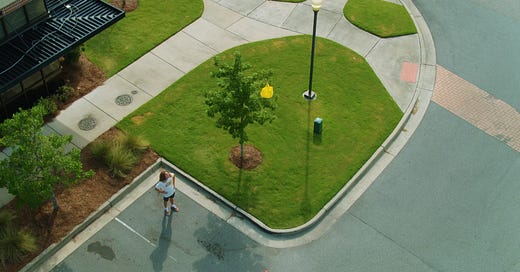






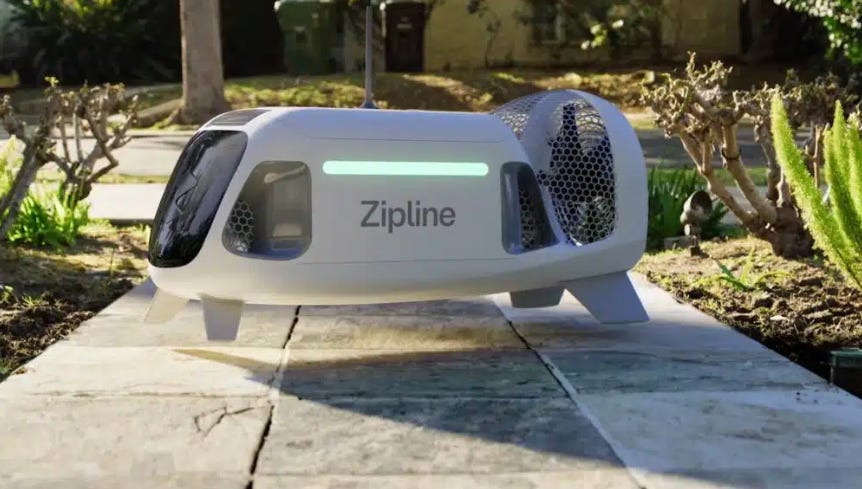
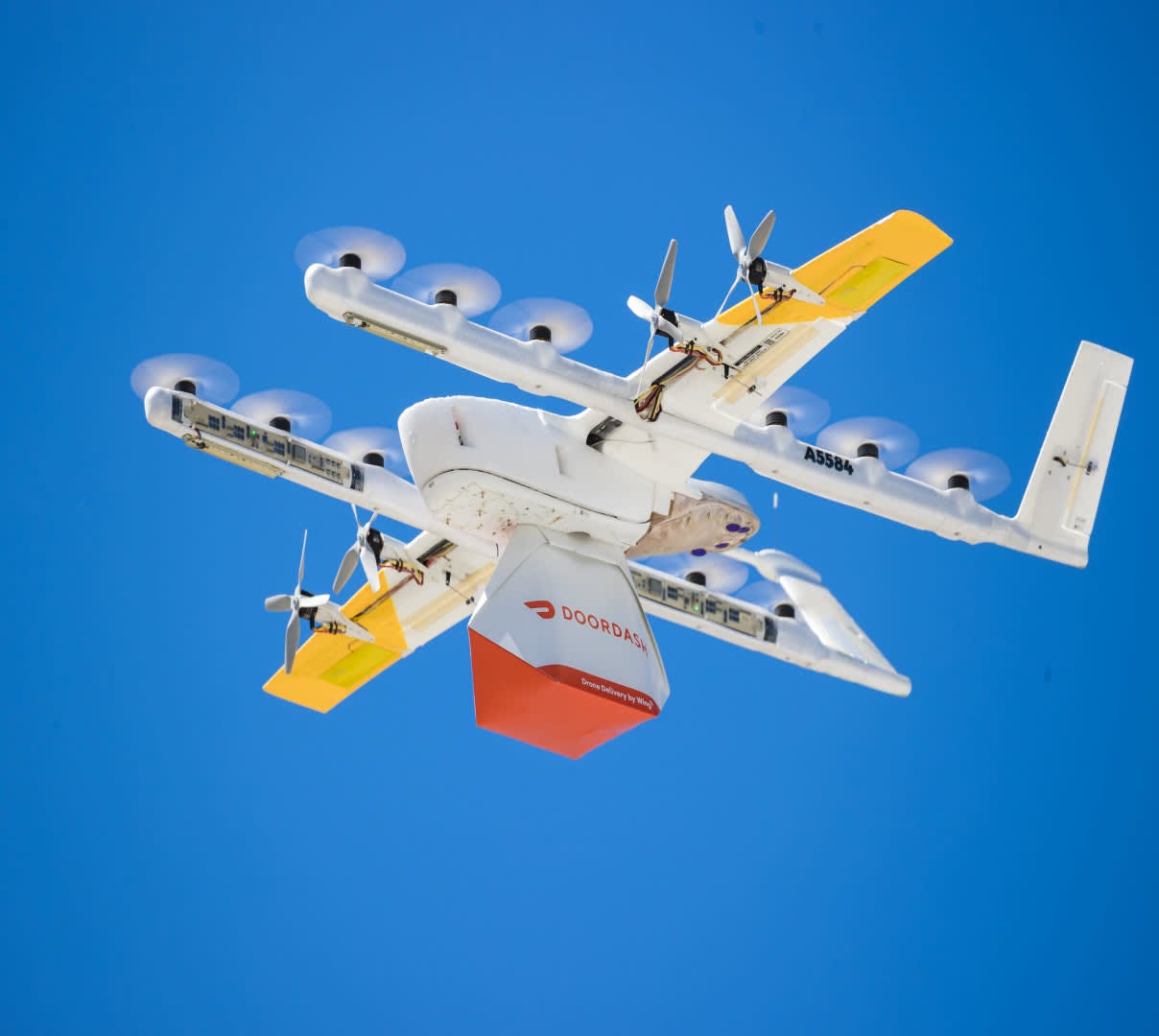
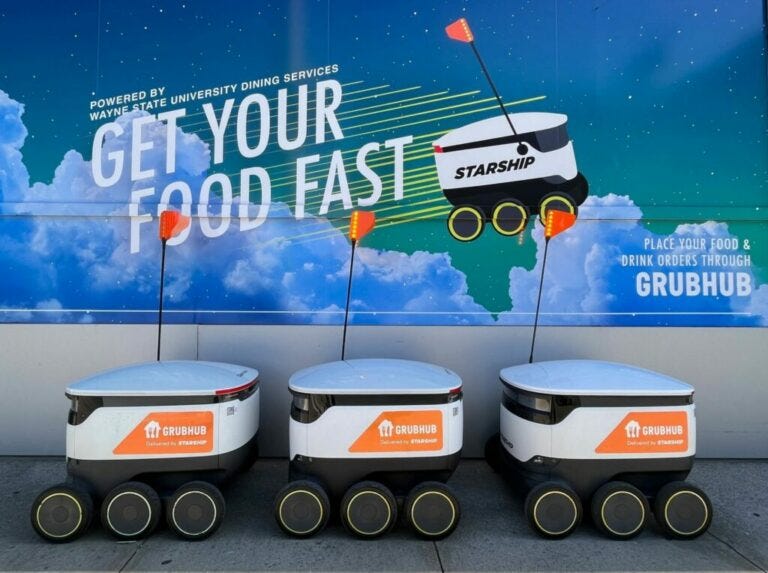
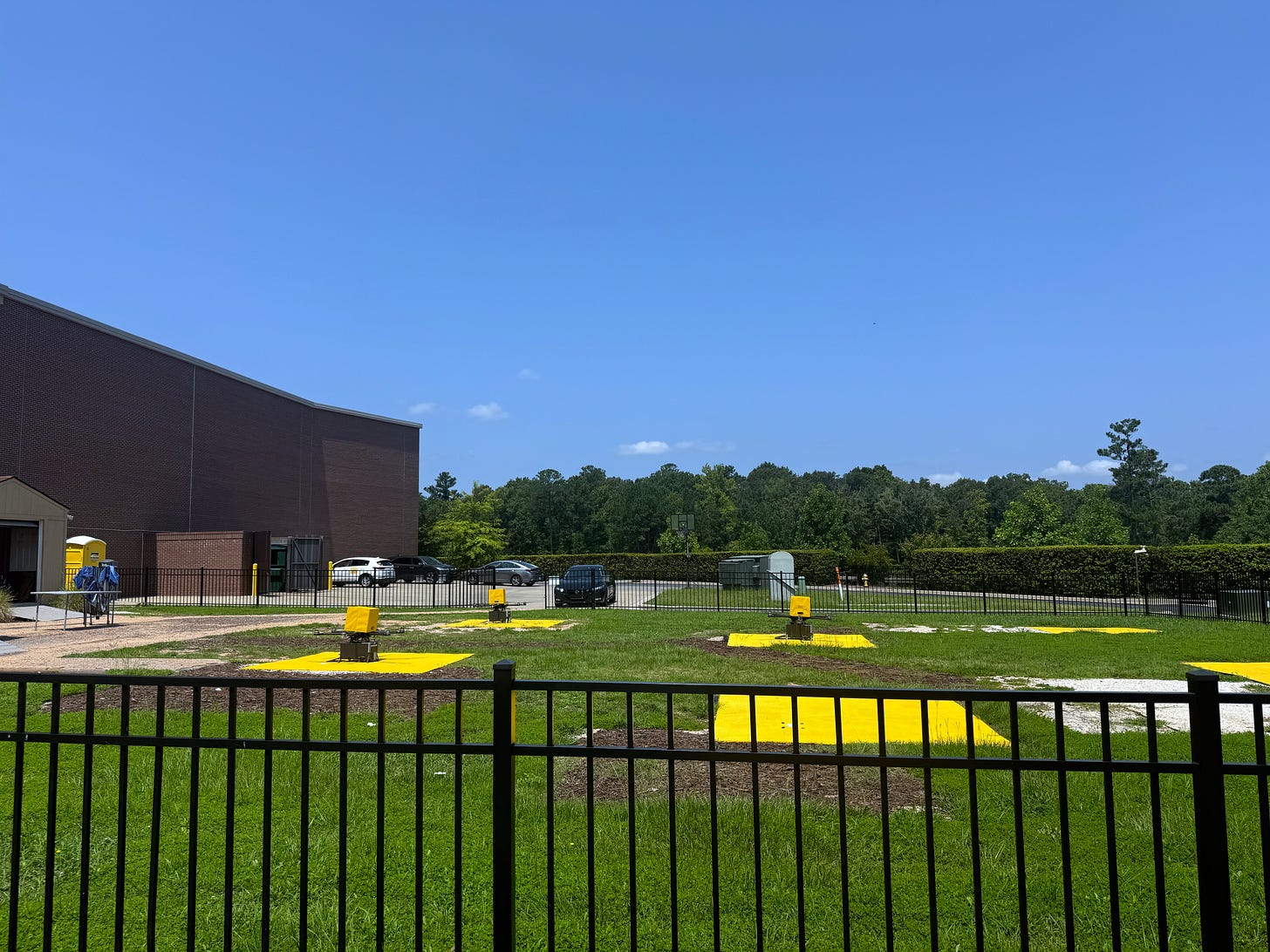
….”if I can deliver the food faster and hotter and for a lower rate, that's a win both for the customer and for the restaurant.”
Hell yeah, it’s so exciting to see this sea change coming. Bad time to be a DoorDash driver, but great time to be a diner!
These companies getting BVLOS certification from the FAA is incredible. I thought it would be a decade at least.